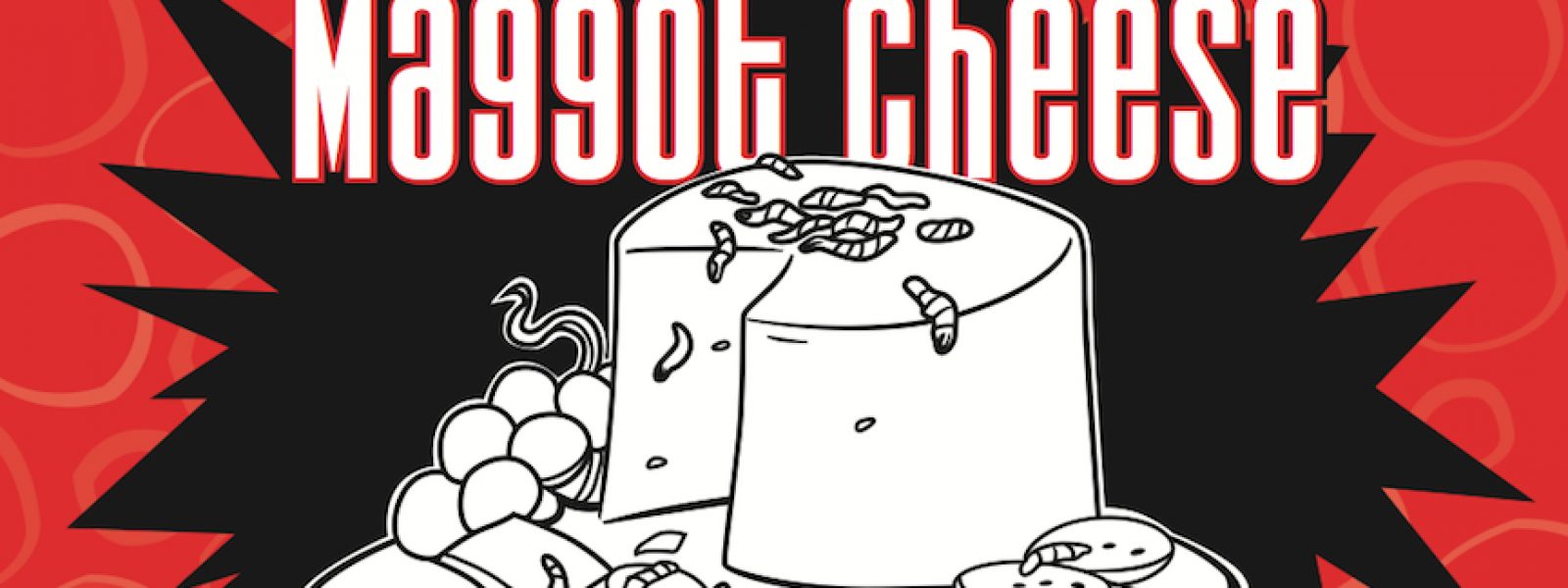It’s Alive!
Picture it: You slice into a a beautiful wheel of cheese. The perfectly aged rind, the pungent rotted diaper scent of coagulated milk, and your ears pick up the teeniest tiniest little squeak, the pitter-patter of little…maggots? That’s right, this midsized wheel of cheese is filled with wriggling and jiggling fly larvae. Maggot cheese, also called casu marzu, is an Italian delicacy most commonly found in the mountainous regions of northern Sardinia. You find similar cheeses in France, Germany, and Nicaragua. I have tried them on two continents and absolutely adore the stuff. I’ll bet most of you would agree with me if you tried it.
How to Make Maggot Cheese
Step 1: Make a wheel of Pecorino cheese and place mature cheese wheel outdoors.
Step 2: Allow the piophila casei, or cheese fly, to lay eggs in cheese.
Step 3: Wait for the eggs to hatch and the larvae to begin eating the cheese. The cheese is ready for you to eat when it becomes soft and begins to weep its liquid-y goodness. But you won’t see if through the hard aged exterior. Practice makes perfect.

Who Cut the Cheese?
Beans aren’t the only “musical fruit.” Lots of other food might lead to toots. The average person will fart, S.B.D. (Silent But Deadly) or otherwise, fourteen times per day. Where does all of that gas come from? Some of it is swallowed air, but the rest is the by-product of food broken down by bacteria in the digestive system. Some foods are more notorious than others for producing thunder down under. Sugary foods tend to be the culprit more often than not and foods high in fiber will just increase the stench.
The scientific name for the gas released in a fart is “flatus.” Flatus is made up of oxygen, nitrogen, hydrogen, carbon dioxide, and the sticker, methane. But every once in a while, a chemical reaction occurs creating hydrogen sulfide, which has a smell reminiscent of rotten eggs.
Just remember this wise idiom before you ask, “Who cut the cheese?”: He who smelt it dealt it.



